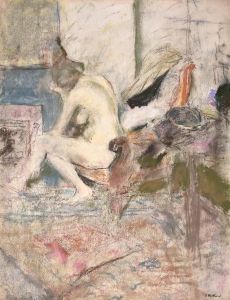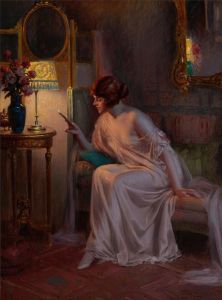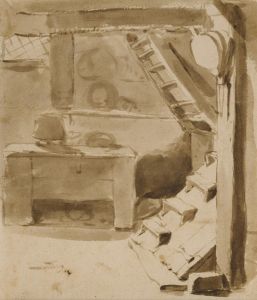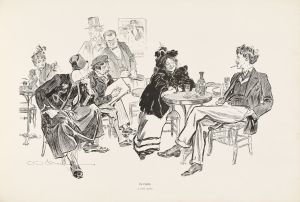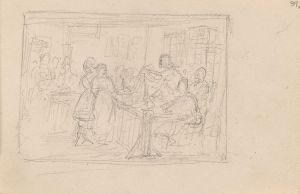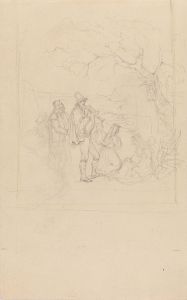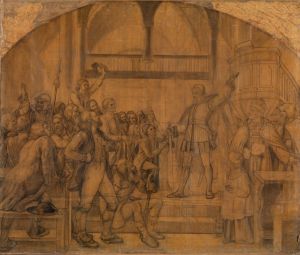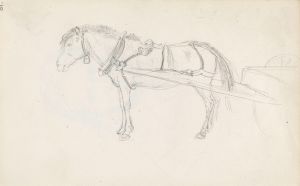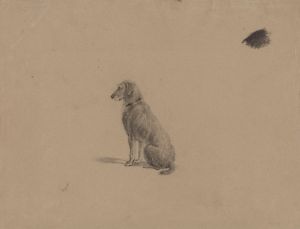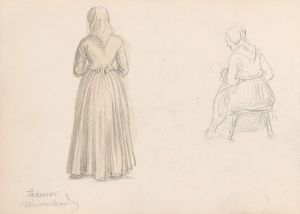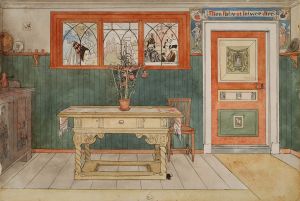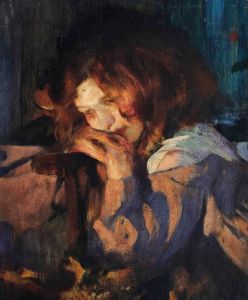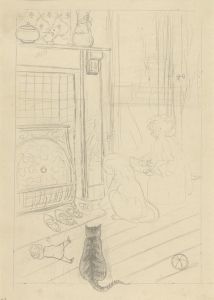
Interiør fra et ildhus
A hand-painted replica of Adolph Tidemand’s masterpiece Interiør fra et ildhus, meticulously crafted by professional artists to capture the true essence of the original. Each piece is created with museum-quality canvas and rare mineral pigments, carefully painted by experienced artists with delicate brushstrokes and rich, layered colors to perfectly recreate the texture of the original artwork. Unlike machine-printed reproductions, this hand-painted version brings the painting to life, infused with the artist’s emotions and skill in every stroke. Whether for personal collection or home decoration, it instantly elevates the artistic atmosphere of any space.
Adolph Tidemand's painting "Interiør fra et ildhus" (translated as "Interior from a Smokehouse") is a notable work by the Norwegian artist, who is widely recognized for his contributions to 19th-century Romanticism and his depictions of Norwegian rural life and traditions. Painted in 1843, this artwork exemplifies Tidemand's dedication to capturing the everyday lives and cultural practices of Norwegian peasants during a time when national identity and heritage were gaining prominence in the arts.
The painting portrays the interior of a traditional Norwegian smokehouse, a structure historically used for preserving meat and fish through smoking. Smokehouses were an integral part of rural Norwegian life, particularly in the 18th and 19th centuries, when self-sufficiency was essential for survival in the often harsh Scandinavian climate. Tidemand's attention to detail in this work reflects his commitment to ethnographic accuracy, as he often conducted extensive field studies and traveled to rural areas to observe and document local customs and environments.
In "Interiør fra et ildhus," Tidemand employs a warm and earthy color palette, which enhances the rustic atmosphere of the scene. The composition focuses on the interplay of light and shadow within the confined space of the smokehouse, emphasizing the texture of the wooden walls and the smoky haze that fills the air. The figures depicted in the painting are engaged in their daily tasks, providing a glimpse into the labor-intensive processes that were a fundamental part of rural life. The individuals are dressed in traditional Norwegian clothing, further underscoring Tidemand's interest in preserving and celebrating the cultural heritage of his homeland.
Adolph Tidemand is best known for his collaboration with Hans Gude on the iconic painting "Brudeferden i Hardanger" ("The Bridal Procession in Hardanger"), but his solo works, such as "Interiør fra et ildhus," are equally significant in their portrayal of Norwegian life and traditions. This painting is part of a broader movement in 19th-century Norwegian art and literature that sought to define and celebrate a distinct national identity, often by focusing on the lives of rural communities and their connection to the natural landscape.
Today, "Interiør fra et ildhus" is regarded as an important example of Tidemand's ethnographic approach to art and his ability to combine realism with Romantic ideals. The painting is housed in the National Museum of Art, Architecture and Design in Oslo, Norway, where it continues to be appreciated for its historical and cultural significance.





